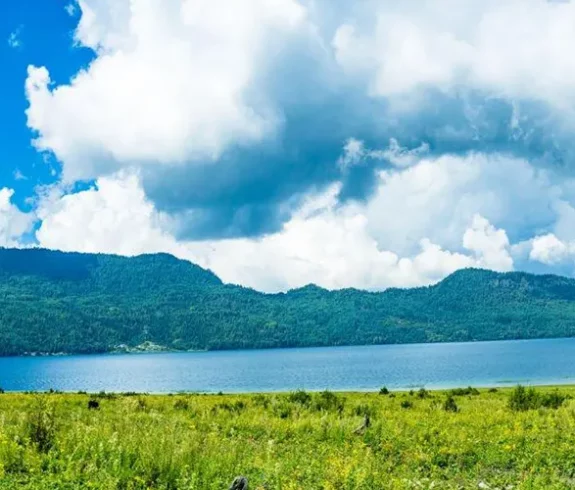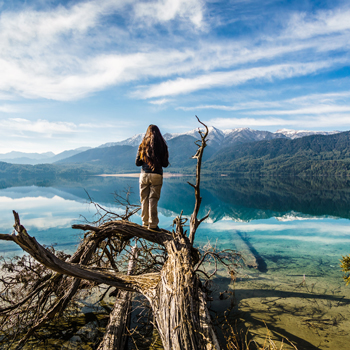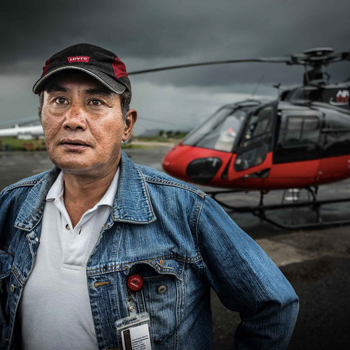— Dr. Nawaraj Lamsal
On 15 June 2023, the second day of the ‘Rara Lake Summit’ occurred. The previous day witnessed an inaugural ceremony featuring a captivating speech by Muguka, the renowned poet. The discussions revolved around tourism prospects, challenges, opportunities, leadership, local government, provincial and federal relations, criticism, controversies, emotions, acceptance, resistance, and plans. There were intense debates, speculations, and varying opinions among the attendees, including ministers and the Prime Minister.
The King was present, but he remained silent, expressing his thoughts through poetry and writings. The Council of Ministers met at the venue, but no significant outcomes were reported. Through conferences held at the state level, they yielded minimal results. The question arises, what will come out of these debates and discussions?
This conscious and critical analysis has captivated my attention. It emphasizes the need for continuous vigilance at the grassroots level. Questions must remain alive, and we must constantly raise them.
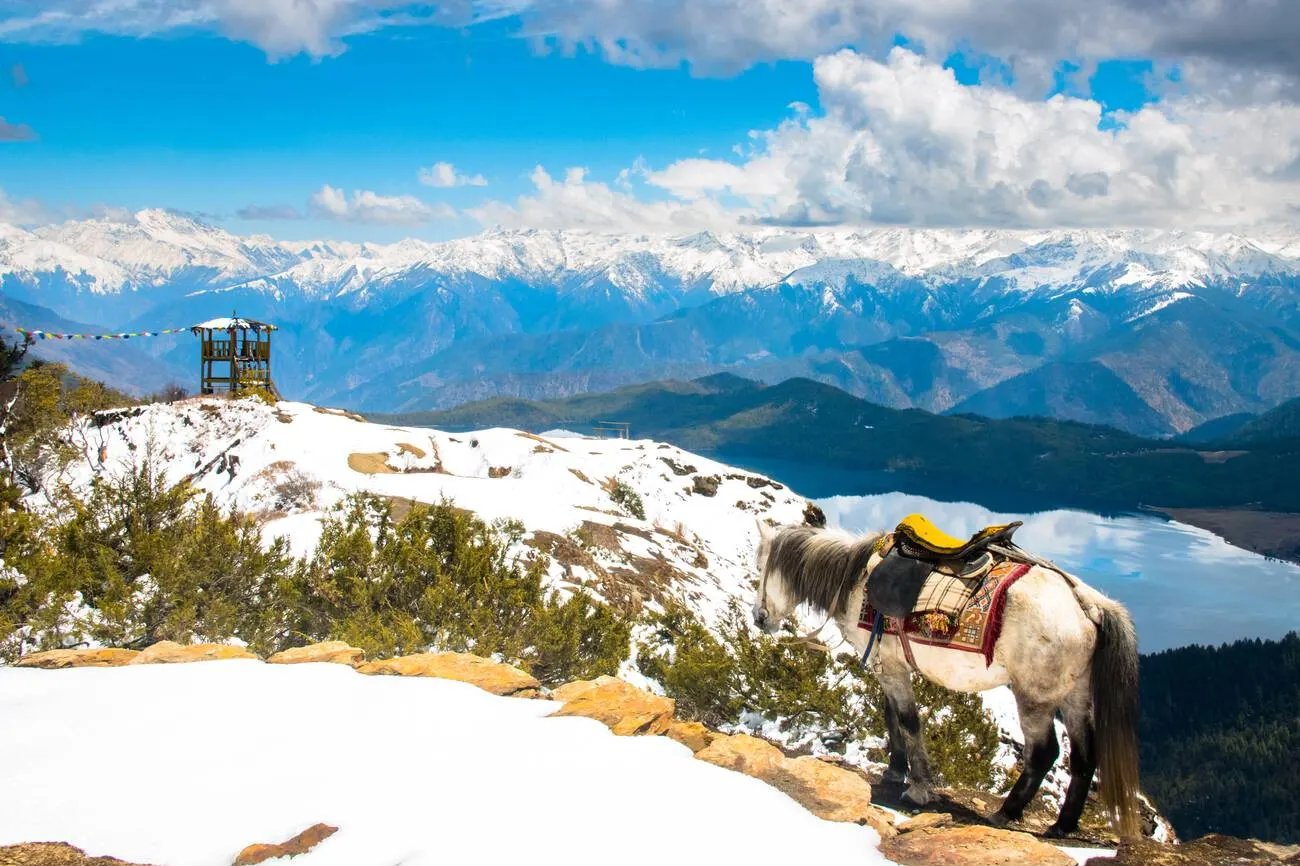
But I remained silent, completely still. Before the touch of a gentle breeze, my heart was already stolen by the enchanting scenery. My eyes were filled with excellent oxygen, refreshing my soul. My mind was blossoming, blooming, and tingling. Every moment was like a breath, inhaling and exhaling, with focused attention like deep meditation.
The sky wasn’t so clear, but the surrounding environment was misted. The sun’s warm rays gradually spread, touching every inch of the earth, the valleys, and the hills. The flowing water added a sweet melody while the fragrance of lotus flowers lingered. The musical sound was its music, its humming, its harmony, and within itself, it dissolved, indicating solitude. Is this a mere coincidence or nature’s creation? Nature itself becomes amazed at its creation sometimes! What kind of sorcery is this that the sculpture created is so alive, vibrant, dynamic, and ensures the safety of life within the beings?
The Second Day of the Summit
I quickly reached there before I even imagined, but that short day turned into a slow one. On May 31, during the inauguration ceremony, I was in Dang for the convocation ceremony of Nepal Sanskrit University. On the same day, since I couldn’t go to Nepalgunj, the next day I met with Rara at the summit. Everything is real, but the organizer is rare (people who can coordinate are rare), as the writer Om Rijal mentioned. He did the work of the organizer. Rijal, who recognized Dailkehak as a hatāru, also met with Pavitra Khadka in Dang. He was accommodating and a true friend. With the support of Pavitra ji and another talented brother Vimal Sharma, it became easy to reach Nepalgunj.
The evening heat was unbearable in Nepalgunj. The heat was so intense that one could cut fruits on the road until late at night. Poet Bhawana Pathak, novelist Anju Nyupane, Mohan Majhi, and Meena Thapa discussed literature until late at night. Along with that, Nepalgunj’s paan (betel leaf) was also very sweet.
In the morning, three of us were on the journey. Suresh Chandra Rijal, Sunilkumar Ulak, and I. Rijal is renowned architect and astrologer. He is also the Secretary-General of the South Asian Astrologers Federation and a profound spiritual scholar. Ulak is a collector of old photographs and a knowledgeable historian. We were accompanied by a young Mugun leader, Devendra Rawal, who connected with us and facilitated our journey. In our first meeting, I found him to be commendably gracious. His contact is also excellent. Now, we are a group of four.
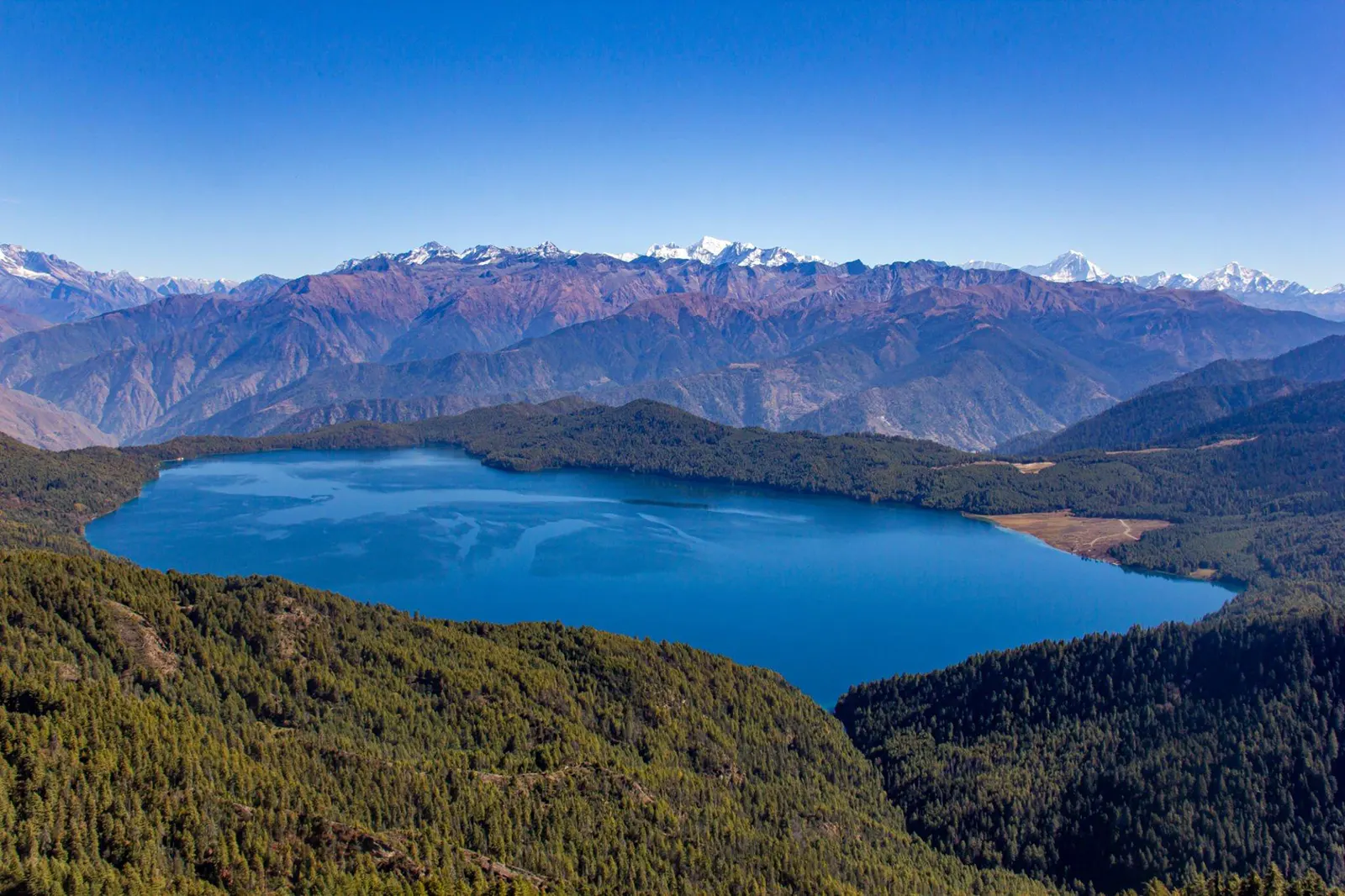
On the morning of the 32nd, despite the flight delay, all the participants of the summit airlines were excited. We took off. We reached Lumbini in a car from Talcha Airport. After a nearly one-hour drive, we made some stops and finally arrived at the program venue, Rara’s Palla Dill.
The organizer, Antaral, and its director, Jayanarayan Shah, welcomed us not as mere program guests but as members of their own families. He received us with the same joyful smile and the passion of love shining on his face, just like the vibrant charm of Rara’s lake. His energy is infectious, never lacking enthusiasm, and he constantly engages in something or the other. He is not just a writer but also a journalist.
Renowned athlete, Vaikuntha Maanandhar’s documentary, is being made, and Amber Gurung is congratulated for his contribution to Nepalgunj. In addition, a special presentation featuring Prem Prakash Mall, who is in a weak condition, was organized to satisfy his elderly heart. Vani Mallal expressed, “Even now, I understand that the program has added some years to my father’s life.” Shah, skilled in sports promotion and event management, attended the Rara Summit held with the cooperation of local municipalities and international support. This was a two-day event.
The body still feels exhausted. I understand. The body and mind are separate. The mind and brain are also distinct. The brain and consciousness are separate as well. But suddenly, everything, including the body, mind, brain, and consciousness, came together at once. The coat was removed, the jacket covered the body, and the cap protected the small head. Husshu (a traditional Nepali flute) and flowing water echoed.
The gentle touch of Husshu and water broke through the thin rays of sunlight in the scorching heat. A debate was underway on the stage. The audience eagerly listened to the waves of the discussion. They silently listened, knowing that they were here to listen. They silently listened, knowing that they were here to be heard. I couldn’t say, “Listen to me,” but there was silent communication with the audience.
Activities: Formal and Informal
The programs of the second day of the Rara Summit were being conducted. After we reached the middle, the program restarted like a repetition. Besides the official sessions, international star athlete Meera Rai deeply inspired the students. For two days, she remained a mesmerizing presence among the young students. In the morning, coach Kavya Lamsal taught the Art of Living. She conducted a yoga session, promoting focused attention. By teaching the art of meditation, she immersed everyone in meditation.
Upon my arrival, local leader Vrikshabahadur Rokaya said, “You have come for the interview, not for the first time, but it feels like it is. Well, love makes us say such things. We have introduced ourselves, but I want to know what this summit can do or what it feels like. Understand quickly, like this welcome by love, how would you think if a drunkard addressed a packed audience like this? Could you explain it to yourself?
Greenery everywhere. The astonishing view of Rara on the side. An abundance of water is flowing. Dancing water. Waterfalls above waterfalls. Different colors above the water. Waves like Indrani’s locks. Green forests all around, and solitude talks within the forest, suddenly jumping from one planet to another like a grasshopper. Complete peace, total serenity. That’s how the hermitage of sages is. That’s how the place where the Vedic hymns are seen. Believing in what is seen, not in what is written. The sages see the Vedas. It is unimaginable, indescribable.”
Beauty, Films, and Tourism in Rara Lake
There was no large stage there, but the place was like a magnificent stage, like a studio. Discussions were ongoing on that platform with ordinary chairs, and participants spoke openly. The discussion revolved around films, film tourism, cinematography, and the use, utilization, and misuse of local colors in films. Film producer Chakrabahadur Chand, documentary director Devaki Bisht, and local singer Swastika Shahi engaged in a dialogue.
During the casual conversation with Samir, Chand had been actively preserving the beauty of Rara through the Bagmati Clean-up Campaign since its inception. He also translated the Hindi song “Prem Gita 3” into Nepali. He argued that Nepal is a perfect location for Indian film cinematography, which would contribute to promoting tourism. Devaki, on the other hand, had been discussing the importance of uplifting local stories through Nepali cinema and the relevance of their context. Swastika, coming from the Mugumudra region, had expressed the pain of being stereotyped and the desire to establish a national identity from the perspective of talent.
Overall, the discussion highlighted the significance of Rara’s beauty, the conservation efforts of Chakrabahadur Chand through the Bagmati Clean-up Campaign, and the diverse viewpoints of Devaki and Swastika in Nepali cinema.
Old tune, new voice
After Rara National Park was established in 2032, Rara and Chhapru villages were merged in 2035 and became a settlement on the banks. How did life change for them from the tiny Rara to that grandeur? But they had thought (if Rara remains Rara, let it be, not the settlement), today they say, “Nothing happened in Rara.” Only the army was stationed to guard the fishing in Rara. No animals are in the park; not even birds chirping can be heard.
The reason for the road not reaching Nikunj creates difficulties for the locals. Transportation is unreliable, and life is full of hardships. The major problem lies with the citizens of Khathiyad. It takes a whole day to reach the district headquarters. Nikunj needs to provide roads. The story of coming from Jumla seems like a distant tale. The local leaders’ voices do not sell, and the central leaders must pay attention. Projects are created in the name of Rara, but transparency is lacking in them.” This is not the saying of a single individual but the collective voice of many.
In this way, a local tourism entrepreneur, Anup Vikram Shah, spent almost three years settling here. Among his three brothers, he is the youngest. At that time, the center of politics was Jumla. His elder brother Ratnabahadur Shah resided in Jumla and engaged in politics, while his other brothers, Jetha and Maila, were in Rara and Khathiyad. Although born in Jumla, he was not as connected to Rara as his father, Nirendra Vikram Shah, who hailed from Mugumudra. His father became honorable from Mugubasi, and his uncle Rajbahadur Shah became a minister.
In 2035, when the village was relocated, this family ended up in Bardia. Their settlement there was highly isolated, more challenging than the village, and far from the road. They protested and returned to Banke or Kathmandu but suddenly realized they should do something in their ancestral land, the Purkhauli region. Rara’s sentiment touched them, and adult Anup returned to Rara. The tourism business started there, but the pain of leaving the village still lingers for him.
Regardless of the purpose, the family believes the village relocation was unnecessary, and the decision could have been more timely and futile. Anup longs to give Rara a new direction by reviving its old sentiments. He appeared pretty emotional during a discussion with journalist Niranjan Adhikari. The focus was on Rara residents who call themselves “Raral.” Gajendra Shah was the first to earn an MA in Anthropology from Rara, and Saubhagya Shah was the first Rara graduate. Anup’s family might have had political aspirations even today. After moving to Bardia, the sequence of events changed.
Although the settlements of Chhapru and Rara were relocated, they say they didn’t abandon their rituals. After moving to Bardia, they still perform the rituals associated with Banke. Still, in times of crisis, Dhami occasionally advises them to go to Rara, and they again offer rituals there. This is also a psychological complexity. There are visible and invisible aspects, but there are also different forms of suffering. The Srimad Bhagavatam mentions three types of suffering: Adi-daivik (divine), Adi-batik (physical), and Adhyatmik (spiritual).
The rapid decline of Rara Lake’s conservation and development is not a concern for just one bird species. Even though the people’s leaders may not have done anything, it’s not just the responsibility of the leaders of all parties to take action. Federal lawmaker Aain Bahadur Shahi, who participated in the summit, also seems restless. He said, “I’m worried about how we can create a sustainable and effective plan for conserving Rara, which has become a concern for all.”
Shahi also raised the issue of road construction. He observed that the significance of resettling the village should have been considered. He also expressed concern over the problems faced by the Khatyadu road, the lack of previous infrastructure, and the state’s negligence. Mugu consists of one municipality and three rural municipalities, with Rara Lake falling under the Chhayanath Rara Municipality.
Regarding the amusement park, even the national park warden, Vishnubabu Shrestha, does not fully agree with the criticisms of the public. He doesn’t completely deny the existence of any problems, but he believes that the focus should be on finding solutions. His argument is based on the coordination he has achieved with business owners and the conservation of natural resources. He doesn’t accept the public’s claim that there is no musk deer in the park. He emphasizes the presence of various wildlife species such as musk deer, Himalayan black bear, red panda, wild yak, and numerous bird species.
There are roads within the national parks in Bajhang and Bardiya, but the argument for not providing roads to the people living in the park’s vicinity has two aspects: the regulations on conservation and the unique nature of each park. He added that if the roads are accessible here, Rara will eventually become like Pokhara. The public may want to turn Rara into another Pokhara.
How to create a conservation plan for Rara?
On my first visit in 2068, I reached Mugu. Engaged in debates in Gamgadhi, I climbed Rara with the conflict mediators. On my second visit in 2074, the summit of Rara looked like a snow peak. On my third visit in 2076, accompanied by a team of communication workers, I reached the summit. My fourth visit was during the Rara Summit in 2080.
Every visit brings a new experience. Despite the beauty of Rara, there is an awareness of its environmental significance. The amount of cold is reducing, and the temperature is increasing. The impact of global warming, which is spreading worldwide, has also reached here. This sequence continues, and the essence of Rara’s water is at risk. The snow on the mountain is decreasing. Snow and the Himalayas are the sources of water. Water is the foundation of life. It is essential to pay special attention to this aspect.
Physically, there are significant changes in Mugu. The dangerous Talcha road has been improved. The road level to Limi has been upgraded. New hotels have been added in Surkhe, and there have been improvements in the roads leading to Surkhe. There used to be only one hotel in Rara, which was the best. Now, a new hotel has been built about one kilometer from the lake, at a higher altitude, from where you can see the complete Rara Lake and the sunrise. There is a growing interest in Rara, and leaders are also concerned to a great extent. But this concern and debate should not be limited to Rara alone. It should be raised in national debates.
The options for transportation to Rara Lake are available up to a certain point by car, up to another point by bicycle, and up to a certain distance on foot. As for the arrangement of accommodations, it depends on the proximity of hotels to the lake and the measures taken for pollution control and conservation, even if there are four hundred soldiers stationed daily in Rara.
There are various types of forests and vegetation around the lake that wild animals inhabit. These animals, including deer, can be seen grazing around the lake and horses. What effect does this have on the ecosystem?
This is an immediate problem. In addition, it is essential to address the long-term issue of preserving the lake’s pristine nature for at least a hundred years beyond 2035, as demanded by the citizens’ children. The state must collaborate to provide answers to every question and take action accordingly. How many wildlife species are there, and what are they? Why are birds singing melodious songs in the jungle, and how dense is the forest?
Cars are not allowed to travel within the vicinity, but is there any possibility of a small pedestrian route that meets the public’s demands? What security measures and strategies can be implemented in such circumstances? How can coordination be achieved between the forest department, the military, representatives, and leadership? In reality, a master plan will be essential for Rara.
When I reached the challenging question
The second day’s final session was still pending. If there was a sign of sesame water, it was overshadowed by the scorching sun, making it challenging to capture videos. Suresh Chandra Rijal and Kavya Lamsal, the technical experts, received a signal to shorten the session. Both speakers had exceptional knowledge of spirituality, yoga, and meditation. Mr. Rijal was an architect, while Mr. Lamsal was an art instructor at the Art of Living.
In this context, Jyanarayan Shah appeared on stage in Chitikka Kot, a small city of opportunities. Although he led the summit, he was an old journalist himself. He announced that this session would be held along with Navaraj Dai.
The discussion on sesame water also began with the session. Jyanarayan Shah started the rain of questions with the topic of water. There are many literary figures, but why haven’t they explicitly written about Rara? Why couldn’t poet Mavivi Shah create a statement higher than the beauty of Rara or an apsara? What did they write before this? Karnali is considered the mother of the Nepali language, so why is Karnali’s language being ignored today? Why is there neglect towards Dullu, Sinja, and Achham, the epitomes of the Nepali language in the stone inscriptions?
How much is the fault of the writers for not being able to demonstrate the importance of language to political leadership? You have been a prominent national and international radio voice for a decade. How much contribution have you made to the development of literature? That’s how Jyanarayan Shah asked his questions. He remained in conversation, partially drenched by water. Even though the audience was drenched for a long time, they listened attentively. Each of these questions can be a separate book.
When I reached the first part of the poem I wrote, the second time I reached a song, and after reaching the third time, when I briefly discussed the social situation of Karnali, I emerged from the challenging question. Now, what should I write? Even after the session is over, he won’t let me go. Let’s laugh and say this article answers that, Jyanarayan Ji.
When I returned
The first time I went to Rara, I only managed to reach Sadarmukam, the gateway to Ghamghadi. This time, I got the opportunity to reach Ghamghadi again, but I had to return as soon as I reached Rara. Returning with the same group: Suresh Chandra, Sunil Kumar Ullak, and me. Devendra Raval facilitated this. We reached Ghamghadi. There was a sweet coincidence. We got the opportunity to interact with people from all social communities and professions.
The enthusiasm of journalists, the activities of schools, and the buzz of the public were notable. The temples like Kalika and Malika, the beautiful Chaayaa Nath temple, and the unmatched religious faith of the people were mentioned. Former Mayor Hari Jung, Shah of the Municipality, said that the water source is excellent, but the management is lacking. His indication was the Gagri line, which was laid for the water supply in Sadarmukam. The construction and maintenance of that temple and the improvement of the road leading to Ghamghadi are also credited to him. He is very modest and gentle.
As Kālidāsa wrote, “On the first day of Āṣāḍha! Yes, the first day of Āṣāḍha 2080 was very delightful for me. I had a great time with my siblings from the nearby school, playing, singing songs, and reciting poems. They even came to play football with me and took pictures together. There was a long conversation with the local elders and journalists in the evening. The sweet dumplings, flatbread, yogurt, and buttermilk I had were not tasteful. Wow! It takes a lot of effort to get a tourist’s attention.
It was time to return. The atmosphere was relaxed when we climbed up the winding road, even though it was scorching hot outside. In that moment, when Rara was placed in the heart, the feeling of coming back and getting wet while understanding the session was terrific. When the plane of Summit Airlines took off from the runway between the two hills, I said to myself,
In the realm of dreams, let stars ignite,
Their shimmering glow, may it ever alight.
Bamboos in Murmāṭ, blossoming fair,
Mugus arrive; let them grace the air.
Within the heart’s chamber, a treasure abounds,
Love’s nectar awaits in passion’s surrounds
Let souls partake, indulge in its delight,
As stars above shower their radiant light.
Together we’ll rest amidst life’s grand scheme,
Conquer challenges as if in a dream.
Step by step, ascending life’s staircase,
Guided by stars, we’ll find our rightful place.
Rivers in motion, their dance brings delight,
Flowers’ hues blend, painting nature’s delight.
Here dwell the true, breaking cultural strife,
Unveiling unity, embracing each life.
No worldly possessions, let your heart be free,
Pour forth love’s essence unreservedly.
May stars continue to grace our skyline,
Bamboos bloom, Mugus arrive, let them shine.
Dr. Lamsal is a poet and a media professional. He received the Madan Puraskar in 2078 BS for his epic poem “Agni.” He has published eight books, including “Agni.”
